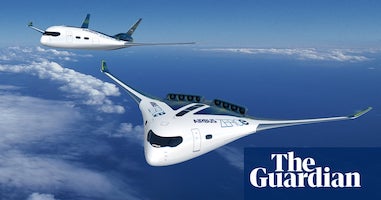Would you fly in one?
The aviation industry is currently undergoing a significant transformation driven by the urgent need for better fuel efficiency and reduced carbon emissions. This has led to exploring radical changes in aircraft design, particularly focusing on the shape and functionality of passenger planes:
The Flying-V, developed by researchers at Delft University of Technology in collaboration with KLM, represents a revolutionary approach by integrating the passenger cabin, cargo hold, and fuel tanks into the wings. This design not only aims to cut fuel consumption by about 20% compared to traditional aircraft but also explores using liquid hydrogen for propulsion, enhancing its environmental credentials. The prototype has undergone successful maiden flights, addressing initial concerns like lift-off issues and stability during flight. However, challenges like engine placement for maintenance and the unique passenger experience due to the wing-cabin integration continue to be refined.
The physics of flight suggest that longer, more slender wings offer better lift with less drag, which translates to improved fuel efficiency. This concept is part of a broader shift towards designs that could replace the conventional “tube and wing” configuration. Innovations like open rotor engines, where the fan is uncovered to increase propulsive efficiency, are being considered. These designs might resemble turboprop engines visually but are intended for speeds similar to current jet engines.
Beyond the Flying-V, there’s interest in blended wing body (BWB) designs where the wings merge seamlessly into the body, reducing drag and increasing fuel efficiency. Concepts like variable sweep wings, although less common now due to advances in flight control technology, highlight the industry’s past and ongoing exploration of variable geometry to optimize performance across different flight regimes.
The push for sustainability is not just changing the shape of aircraft but also how they operate. Features like gust sensors for automatic wing adjustments during turbulence mimic natural bird flight, enhancing efficiency and passenger comfort. The industry aims for significant emission reductions, targeting a 30% cut through these and other technological advancements, with plans for demonstrator flights by 2028 and potential in-service dates between 2030-2035.
This shift towards Flying-Vs, longer wings, and BWB designs signifies not just a change in how aircraft look but a profound transformation in how we approach aviation’s environmental impact, aiming for a future where flying is significantly more efficient and less harmful to the environment.
Flying-Vs and longer wings: how the familiar shape of passenger planes is about to change https://t.co/STxBqdnM61
— The Guardian (@guardian) September 28, 2024
